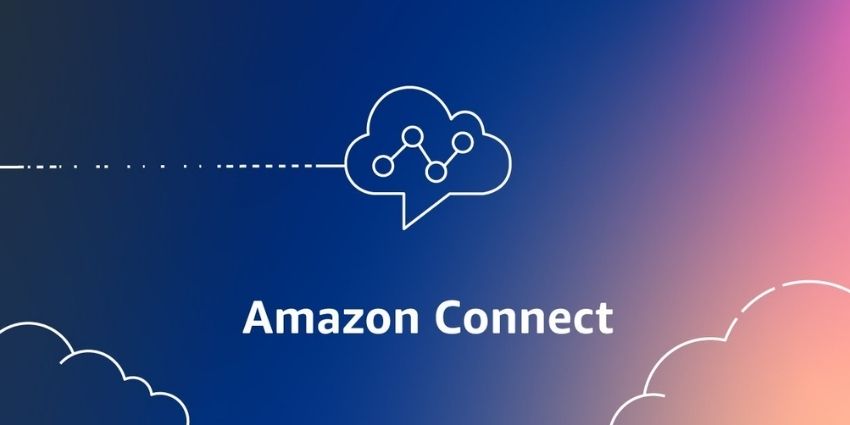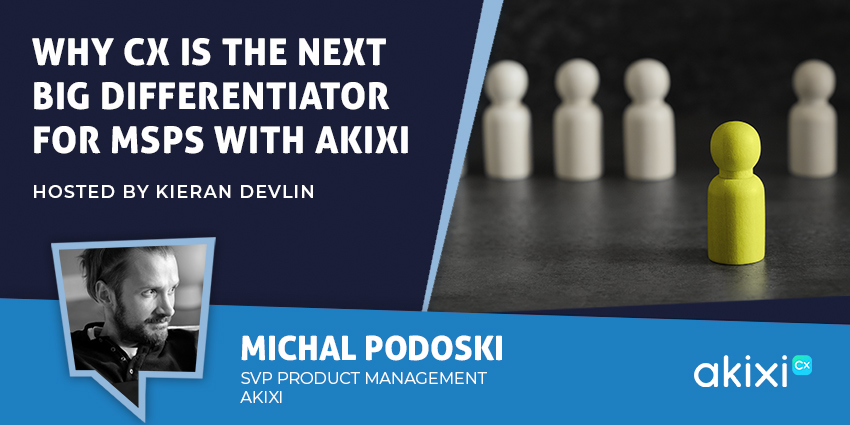Welcome to the ultimate AWS Connect guide – covering everything you need to know about one of the most reliable, flexible, and intuitive contact center solutions around. Initially launched in 2017, AWS Connect (or Amazon Connect) has become one of the most popular solutions for omnichannel customer communications, fusing voice, chat, and messaging with cutting-edge AI.
For some time now, Amazon Web Services (AWS) has stood out as a market leader in enterprise communications technology. Although the company recently shut down its “Chime” UCaaS offering, encouraging customers to leverage platforms like Zoom instead, AWS is still thriving in the contact center market. In fact, the Connect ecosystem is now more powerful than ever.
Not only does it give companies access to an intuitive way to deliver personalized, fast, and friction-free experiences to customers across channels, but it comes packed with generative AI capabilities, workforce management, and quality assurance tools.
Ready to explore everything Amazon Connect has to offer? Let’s dive in.
AWS Connect Guide: How Amazon Connect Works
AWS Connect is a flexible, scalable, cloud-based contact center service that empowers businesses to establish and manage customer support operations across channels. It comes with everything the modern customer service team needs, from global voice functionality to chat, email, task management, and even video conferencing tools.
With AWS Connect, companies can stay on the cutting edge of AI innovation with flexible tools that streamline customer service and improve agent productivity. On a broad level, AWS Connect basically acts as a “hub” for a range of interconnected solutions, such as:
- AWS Lambda: A serverless compute service that allows companies to run code in response to events. For instance, you can retrieve order history information, check a customer’s account status, or generate personalized messages without maintaining servers.
- Amazon DynamoDB: A fast NoSQL database often used to store customer records. During a call or chat, Connect can tap into DynamoDB to instantly pull relevant data, like order statuses or membership levels.
- Amazon S3: The “Simple Storage Service” (S3) delivers scalable storage for various data types, such as call recordings, chat transcripts, and other artifacts. This ensures every company gains access to secure, flexible storage for all data.
- Amazon Kinesis: A real-time data streaming service. You can feed call transcripts, sentiment data, or agent performance metrics into a Kinesis stream to visualize them in real time or feed them into machine learning models.
- Amazon AI: Amazon’s AI features range from Amazon Lex (which allow users to create intelligent chatbots), to Amazon’s Q solution for agent assistance, as well as Amazon Connect’s Contact Lens for real-time analytics and quality management.
Companies can also take advantage of solutions like Amazon VPC for isolated cloud resources, Amazon EC2 for running virtual servers in the cloud, and Amazon SageMaker for enterprise-grade AI management and data processing.
AWS Connect Guide: The Core Features
As you’ll see throughout this AWS Connect guide, Amazon Connect is brimming with a range of ever-evolving tools and features for contact center teams. Here’s an overview of just some of the most impressive capabilities this platform has to offer.
Omnichannel Communication Tools
As mentioned above, AWS Connect is a fully omnichannel platform. It doesn’t just support global voice with a range of inbound and outbound calling features. AWS Connect also supports live or AI-driven chat, messaging, email, video, and screen sharing, and more.
You can create natural conversational IVR and chatbot experiences, build omnichannel outbound campaigns, and access a streamlined “task management” solution built into your contact center. Amazon Connect Tasks makes it incredibly easy to track issues across channels and even automate processes that don’t necessarily need human intervention.
Contact Flows for Personalized Journeys
In Amazon Connect, companies can create “Contact Flows” – visual representations of their customer journey. Think of it as a drag-and-drop tool for mapping out how an interaction unfolds from the moment a customer calls or messages you. For example:
- Greeting and Identification: Greet the customer, ask for their account number, and use AWS Lambda to fetch their info.
- Menu Options or Bot Interaction: Offer them self-service through an AI-driven menu, or connect them to a chatbot for routine tasks.
- Live Agent: If more complicated assistance is needed, route the person to an agent with the right skill set.
- Follow-Up: Optionally create tasks if anything needs to be done afterward.
The magic here is that you don’t need to be a coder to build or modify these flows. Business analysts, tech-savvy managers, or contact center supervisors can shape the process quickly, letting your team adapt to changes in customer demands on the fly.
Natural Language Chatbots (Amazon Lex)
For companies ready to explore the benefits of AI in customer service, Amazon Connect offers access to Amazon Lex, a natural language processing engine that allows teams to create brand-specific chatbots that can understand and respond naturally to customer queries.
Amazon Lex bots use automatic speech recognition and natural language understanding and work across various channels. Companies can use Lex chatbots to reduce agent workloads, manage common customer queries instantly, and even automate things like sharing password reset information with buyers.
IVR and Intelligent Call Routing
As mentioned above, AWS Connect gives companies all the tools they need to build customized, AI-driven IVR experiences, and intelligent routing strategies. You can create IVR systems that allow users to navigate menus with their voice (rather than using buttons), thanks to Amazon Lex.
Plus, you’ll be able to use skills-based routing for numerous channels. Amazon Connect has a single, unified routing engine for calls and chat, designed to boost efficiency among agents. You can even choose how to route customers based on variables like agent availability, skillsets, customer sentiment, or previous purchasing histories.
Real-Time and Historical Insights
If you’re looking for valuable insights—whether you’re tracking sentiment analysis or trying to forecast future call volumes for enhanced resource optimization—AWS Connect is fantastic. With customizable dashboards, team members can get real-time insights into everything from sentiment scores to call quality metrics. There are even tools supervisors can use to track performance metrics.
Plus, users can also take advantage of automated and generative AI-powered post-contact summaries, contact categorization tools, and even data redaction features for compliance purposes. Additionally, AWS Connect offers caller authentication and fraud risk detection tools. On top of all that, business leaders can create comprehensive reports using historical data and take advantage of intelligent forecasting capabilities.
Call Recording and Transcription
With AWS Connect, companies can easily record, transcribe, and store contact information across channels without compromising on security or compliance. Business leaders can use AWS Connect to develop in-depth forecasting strategies, plan capacity, and track agent adherence.
Plus, as mentioned above, you can use AI-powered tools to rapidly transcribe and translate call recordings, saving employees time for post-call work. The AI-powered tools can even help segment your audience based on recordings. Plus, with the Amazon Connect analytics data lake, you can access and analyze all kinds of contact center and third-party data in minutes.
Workforce and Task Management
We already mentioned the “Tasks” feature earlier in this AWS Connect guide, but that’s not the only tool the platform gives businesses for workforce management. Alongside task management tools and real-time dashboards, you’ll also get access to comprehensive workforce management tools for capacity planning, forecasting, and agent scheduling.
Amazon Connect even comes with a dashboard where supervisors and agents can view, manage, and adjust their schedule. Plus, supervisors can instantly track agent adherence scores – monitoring who’s on duty, who’s on break, and who needs extra support.
AWS Connect Guide: Integrations
No comprehensive AWS Connect guide would be complete without a section exploring just how flexible this platform is. First, AWS Connect is fully integrated with the complete AWS ecosystem, from AWS Lambda to Kinesis and S3. You can even easily tap into cutting-edge systems, like Amazon SageMaker or AWS Bedrock, to create custom solutions.
Companies get full access to solutions like Amazon Q, the comprehensive AWS generative AI assistant that helps employees access insights, boost efficiency, and streamline customer service. On top of that, AWS Connect integrates with a huge variety of third-party tools.
There are many flexible CRM integrations for platforms like Salesforce and Zendesk. In fact, AWS offers one of the most comprehensive integrations with the Salesforce Service Cloud, bringing digital and voice communication capabilities into your CRM.
You can also take advantage of various technology partner integrations, whether you’re looking for state-of-the-art WFM/WFO solutions, mapping and location services, or collaboration tools like Zoom. Amazon Connect also has an API reference guide for building custom integrations.
Security and Compliance: Is AWS Connect Safe?
If you’re concerned about contact center security and compliance, AWS Connect has you covered. AWS employs strict data protection measures to improve the confidentiality and integrity of your information. Alongside end-to-end encryption for data at rest and in transit, you’ll also get access to multifactor authentication solutions and robust access controls.
The AWS Identity and Access Management solution makes it easy for businesses to assign granular permissions to each team member, minimizing the risk of data leaks. Plus, AWS supports compliance with HIPAA standards (for healthcare companies) and GDPR.
In fact, AWS supports more than 143 security standards and compliance certifications, including options like PCI-DSS, FedRAMP, and NIST 800-171. On top of that, since you can integrate AWS Connect with archiving and eDiscovery tools, you’ll have no problem making sure your team can adapt to evolving compliance standards.
AWS Connect Guide: Pricing
One of the things that makes AWS Connect such an attractive option to businesses of all sizes is its flexible pricing. Connect is a “pay-as-you-go” cloud contact center solution. That means there are no minimum monthly fees, upfront license charges, or long-term commitments to worry about.
Ultimately, you only pay for what you use, and there are two ways to pay for usage. You can pay for all of the Amazon Connect features you need at once or for individual features. For instance, you can pay for inbound and outbound voice usage on a “per minute” basis. Alternatively, chat features are charged per message, and so on.
Notably, pricing can add up depending on what you need. You’ll need to consider the individual “usage” requirements for all the tools you’re accessing, from global voice to data storage in Amazon S3. Plus, there may be additional costs to pay for integrations and add-ons.
Cost-Cutting Tips for Amazon Connect
Since you only pay for exactly what you use, AWS Connect is already a good value for money, ensuring companies don’t spend a fortune on unnecessary “extras”. Still, if you want to make sure you’re getting the best return on your investment:
- Monitor Usage Carefully: Use tools like the AWS Cost Explorer to track and analyze your usage patterns and identify areas where you could reduce costs.
- Leverage Self-Service: Handling more conversations with Lex chatbots means you’ll spend less on usage minutes and extra agents.
- Review Recording Policies: If you don’t need to store all calls indefinitely, adjust your retention settings to cut down on S3 storage bills.
- Scale Dynamically: If your business is seasonal, ramp down usage of extra features in the off-season so you’re not paying for idle capacity.
Getting Started: Setup, Configuration, and Top Tips
As mentioned throughout this AWS Connect guide, Amazon’s tools are designed to be user-friendly and flexible. You don’t necessarily need to be a tech wizard to make the most of this platform. Plus, if you do have specialist needs, there are a ton of great partners you can turn to for help.
Here’s a quick rundown of the steps to get started with AWS Connect and a few best-practice tips for better results.
Setting Up AWS Connect: The Basics
First, visit the AWS website and create an account. Once you click the “Get Started” button, you’ll be asked for some basic information, and AWS will walk you through the process of configuring telephony solutions and setting up channels. You’ll also need to set up storage for your call data (we recommend using Amazon S3 for this). Next:
- Claim a Phone Number: Opt for a local or toll-free number depending on your needs.
- Add Agents: Create user profiles for your agents. Remember to consider permission options, routing requirements, and security.
- Create Contact Flows: Head to the “routing” section on your dashboard and build your contact flows by dragging and dropping elements into place.
- Leverage AI: Create conversational bots in Amazon Connect with Amazon Lex.
- Implement Monitoring strategies: Take advantage of real-time dashboards and historical reporting tools to track agent and contact center performance.
Quick Best Practice Tips
Configuring AWS Connect is pretty similar to setting up any cloud-based contact center solution. Once you’ve got the “basics” set up, here are some quick tips for making the most of your tools:
- Be Strategic with Contact Flows: When creating your omnichannel contact flows, make simplicity a priority. Don’t overload customers with too many choices, but make sure you’re paying attention to customer journey metrics so you can optimize flows over time.
- Use Integrations: Take advantage of the integrations AWS Connect offers for workforce management, collaboration, and CRM platforms. Consider working with a professional to create custom integrations using APIs depending on your needs.
- Monitor Everything: Use Amazon Connect’s in-built reporting capabilities to track everything from first-contact resolution rates to average handling times. Use your dashboards to keep team members up to date with performance metrics.
- Offer In-Depth Training: In-depth training resources can help your team members maximise the features offered by AWS Connect. Create videos or use the training resources that come with Amazon’s services.
- Keep Experimenting: Pay attention to Amazon Connect’s latest features, such as state-of-the-art AI solutions (through Amazon Q and Amazon Lex). Experiment with new ways to enhance customer experiences and improve team efficiency.
AWS Connect Guide: Top Use Cases
At this point in our AWS Connect guide, you might be wondering what kind of company will benefit most from a flexible, cloud-based contact center solution. Ultimately, Amazon’s contact center is a great option for businesses of any size (in just about any industry), but it’s particularly ideal for:
- Small Businesses: AWS Connect is a brilliant, cost-effective option if you’re running a smaller business with limited resources. You only pay for the tools you actually need, and you can scale as necessary, depending on seasonal or contact volume surges. Plus, you won’t need an army of IT professionals to get everything running smoothly.
- Large Enterprises: AWS Connect’s scalability also makes it fantastic for larger enterprises, particularly those with huge contact volumes who want exceptional speed and reliability. You’ll be able to take advantage of advanced routing systems and cutting-edge AI. Plus, you can maintain compliance at scale, with end-to-end security features.
- Remote and Hybrid Teams: As a cloud-first platform, AWS Connect is fantastic for remote and hybrid teams. Your employees can benefit from browser-based access to all the tools they need. Plus, supervisors can use real-time monitoring and dashboards to monitor remote agents and rapidly adapt workflows to changing requirements.
Embracing the Future with Amazon Connect
AWS Connect is tough to beat if your organization needs a cloud contact center platform that’s genuinely flexible, scalable, and packed with AI-driven capabilities. It’s among the most intuitive omnichannel solutions on the market, giving support teams an effortless way to deliver efficient, personalized service across multiple channels.
Although Amazon is withdrawing from the UCaaS space by discontinuing Chime, the company’s commitment to reinventing the contact center remains clear. It’s hardly surprising that AWS is now a top contender in Gartner’s CCaaS Magic Quadrant.
AWS Connect is a transformative choice for businesses seeking robust security, strict compliance, and budget-friendly pricing. Better still, as Amazon continues investing in advanced AI and automation tools, the platform’s value will only rise in the coming years.







